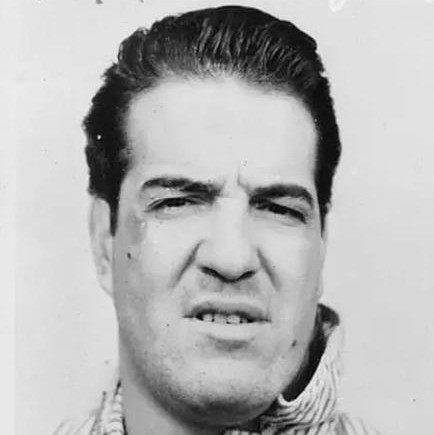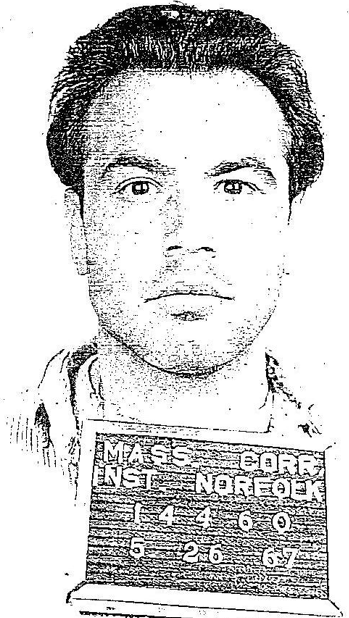
1932 - 1976
Joseph Barboza Jr.
Summary
Name:
Joseph Barboza Jr.Nickname:
The Animal /The Baron / The Wild Thing / Joe Valachi of New EnglandYears Active:
1950 - 1976Birth:
September 20, 1932Status:
DeceasedClass:
MurdererVictims:
11+Method:
Shooting / StabbingDeath:
February 11, 1976Nationality:
USA
1932 - 1976
Joseph Barboza Jr.
Summary: Murderer
Name:
Joseph Barboza Jr.Nickname:
The Animal /The Baron / The Wild Thing / Joe Valachi of New EnglandStatus:
DeceasedVictims:
11+Method:
Shooting / StabbingNationality:
USABirth:
September 20, 1932Death:
February 11, 1976Years Active:
1950 - 1976Date Convicted:
December 13, 1971bio
Joseph Barboza Jr. was born in New Bedford, Massachusetts, on September 20, 1932, to Portuguese immigrants from Valpaços, in northern Portugal. His father, Joseph Sr. (born José Barbosa), was a middleweight boxer who had a brief professional career in the early 1930s. Barboza grew up in a working-class environment and had two brothers and a sister. Despite having less than an eighth-grade education and being functionally illiterate, Barboza was fluent in Portuguese, Spanish, and Italian.
He was known for his fiery temper and strength from a young age. He pursued boxing under the alias “The Baron,” registering a respectable record of eight wins in eleven matches. He boxed professionally from 1949 to 1961 and fought with an orthodox stance. Outside of boxing, Barboza worked as a longshoreman and fruit store clerk, but always found himself returning to criminal activity.
At 18, Barboza was first imprisoned in 1950 for burglary. While incarcerated at MCI-Concord, he and six inmates escaped in 1953 in what became the prison’s largest jailbreak in its 75-year history. After a 24-hour spree involving assaults, drunken behavior, and evasion through the Boston area, they were recaptured. Barboza’s behavior in prison was volatile, often attacking guards. These early signs of volatility would shape his violent and notorious underworld life.
He married a Jewish woman and had a daughter in 1965 and a son. By the early 1960s, he was deeply entrenched in Boston’s underworld, frequently spotted at “Barboza’s Corner” in East Boston. His crew of small-time criminals was overseen by Stephen “The Rifleman” Flemmi, though Barboza himself was never formally inducted into the Patriarca crime family due to his Portuguese descent.
murder story
Barboza’s murder career began in earnest in 1964. He reportedly killed Harold Hannon and Wilfred Delaney as revenge for Hannon's role in the death of Tommy Sullivan. From there, a string of brutal killings followed, many of which were allegedly commissioned by the Patriarca crime family. These included high-profile hits such as Edward McLaughlin and Cornelius Hughes, members of rival gangs.
Although feared and efficient, Barboza’s recklessness and disregard for Mafia protocol made him a liability. He drew unwanted attention from law enforcement, and by 1966, he was a marked man. He was arrested in October 1966 on weapons charges but couldn’t afford his $100,000 bail. The Mafia refused to help him, further alienating him from organized crime.
After two close associates attempting to raise his bail were murdered, Barboza realized his time was up. In 1967, while imprisoned at Walpole, he became one of the first high-profile informants to enter the Witness Protection Program. In exchange, he testified against Raymond Patriarca and several top-tier mobsters, helping the FBI secure key convictions — albeit under controversial circumstances.
Barboza’s false testimony led to the wrongful conviction of six men for the 1965 murder of Edward Deegan. Four were sentenced to death, and two to life imprisonment. Years later, it was revealed that Barboza and Vincent Flemmi had committed the murder themselves. The miscarriage of justice led to a historic $100 million lawsuit against the U.S. government.

Despite his betrayal of the Mafia, Barboza was eventually paroled in 1969 and moved to California under the alias Joseph Donati. However, in 1970, he committed another murder, killing Clay Wilson, and was sentenced to five years at Folsom Prison.
Barboza’s notoriety and betrayal sealed his fate. On February 11, 1976, while walking to his car outside a friend’s apartment in San Francisco, Barboza was ambushed and killed by four close-range shotgun blasts. Though he carried a Colt .38, he had no time to react. Mob enforcer J.R. Russo was later implicated in his assassination.
Joseph Barboza remains one of the most controversial figures in American organized crime history — a man who played both sides of the law and whose legacy is marked by violence, betrayal, and systemic corruption.
He is buried in South Dartmouth Cemetery in Dartmouth, Massachusetts.